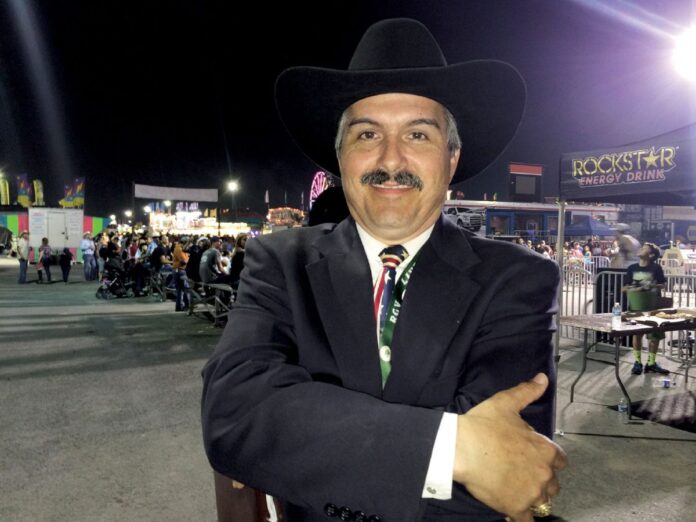MERCEDES — For Luis Saldaña, agriculture is life.
Though true in the literal sense, the 47-year-old Mercedes native expressed the sentiment figuratively this past week when recalling his history with all things ag, and the legacy it has created for future generations.
It began with the influence of his father, Lauro Saldaña Jr., who was an ag teacher at Mercedes High School for nearly 20 years before becoming a vocational director. This meant that Luis often accompanied his dad to events such as the Rio Grande Valley Livestock Show, where he was exposed to cattle raising and showmanship early on.
It was only natural that Luis began raising pigs and sheep when he was 8 years old. He also joined the FFA and raised hogs, brahman and zebu during his high school years to show at the stock show.
Today, Luis can be seen within the same grounds, but this time it’s his children who are participating.
“I’ve been around agriculture my entire life because of my father and his involvement,” Luis said, adding that his father was raised on a ranch in Starr County and made a good living raising cattle. “You might even think it’s almost genetic, because he (Lauro) didn’t really say, ‘I’m going to teach you about agriculture.’ It was just part of our lives and we didn’t know any different.”
Armed with a bachelor’s degree in Agricultural Economics from Texas A&M University as well as a master’s in Business Administration from UTPA, Luis embarked on a similar career that also involved the “ag lifestyle,” as he put it, becoming his livelihood.
Now he wears many hats, although he’s most recognizable by his black Stetson, and serves in various capacities for several entities.
For instance, Luis works in 4-H and youth development for the Texas A&M AgriLife Extension Service and volunteers for the stock show as an arena director and announcer for several events. He’s also the chairman of the International Relations Committee, which is tasked with promoting international relationships between cattlemen in Mexico and the U.S.
The committee’s impact can be of benefit to local breeders, according to Luis.
“We hooked up a buyer from San Luis Potosi with a breeder here in the Valley, and they bought three different bulls from the breeder,” he said.
More recently, Luis was named to an RGVLS advisory committee of at least 12 members. Still, there’s one job he takes more seriously than the others.
“I’m a parent first,” Luis said before expressing pride in his children following in their father’s, and his father’s before him, footsteps. “My kids are involved in virtually all facets of the livestock show — from raising rabbits and cattle to my youngest having a shop project this year.”
With regard to their path, Luis added, “I didn’t consciously say, ‘I want to try this.’ It was just a natural part of growing up and something we were associated with and involved with. The ag lifestyle has always been weaved into our fabric, if you will.”
His work in 4-H is especially important, Luis further noted, when considering the life skills offered to participating youth. The stock show is a big part of developing such skills, he said.
“The livestock show, like in most parts of Texas, is an integral part of rural living,” Luis stressed. “Even if it’s one heifer, pig or chicken, the relationship between raising these animals and the food supply is so important. Understanding that there’s a poultry industry that supports not just this country but the entire world, it’s surreal to know that you can be a part of that and that you can be a part of something that’s a lot bigger than yourself.”




